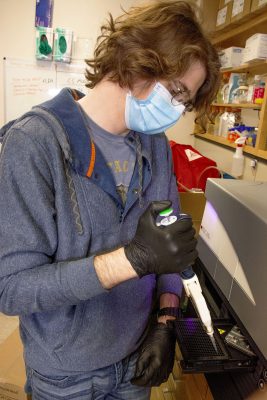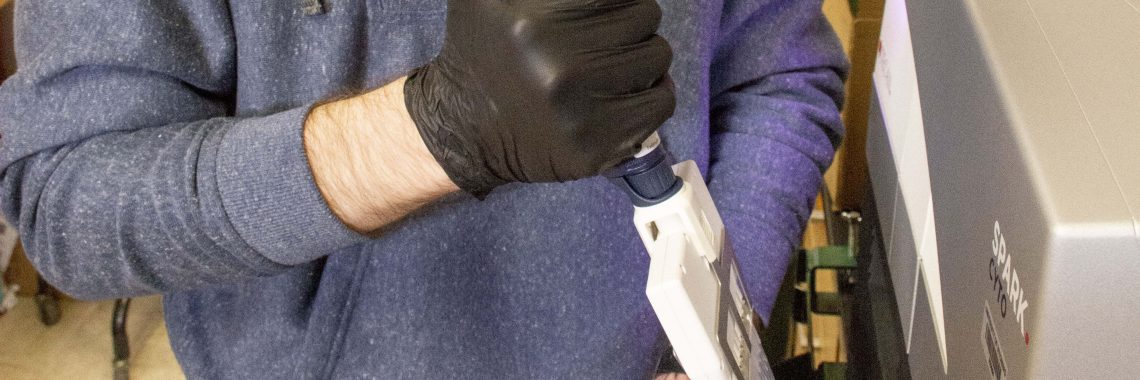
University of Wyoming researchers in collaboration with others across the U.S. will begin investigating how environments can turn proteins into jacks-of-all-trades journeymen.
Molecular biologist Thomas Boothby’s laboratory is part of a National Science Foundation $992,485 three-tier study that will examine how a special class of proteins change shape and how the changes help an organism survive extremely dry conditions. The title is “Functional Synergy Between Disordered Proteins and their Environment in Desiccation Protection.”
Researchers want to understand how the chemical environment in which disordered proteins are immersed — in this case extreme dryness — dictate their shapes and functions.
“So by changing their environment, you can change how these proteins are working,” said Boothby, whose laboratory studies how organisms can survive extreme environments.
Boothby then wants to apply what is learned to stabilizing biomedical materials, such as blood, and to produce hardier crop plants.
Disordered proteins are dispersed throughout the kingdoms of life. Most proteins have a stable three-dimensional structure. They are like little machines: their structure helps them do their jobs, said Boothby.
“These disordered proteins lack a stable three-dimensional structure, and they are constantly changing their shape,” he said. “They seem to us like they should be constantly breaking but in fact they serve vital roles.”
Boothby said other members of the research group are Alex Holehouse at Washington University in St. Louis, one of the world’s leading experts in the understanding of and in computer modeling the disordered proteins, who will predict what function comes from changing a protein’s shape; and Shahar Sukenik at the University of California, Merced, who will measure the changes. Boothby’s laboratory then will test what those changes in shapes really do for the organism that’s drying out and how it helps that organism survive.
For example, as a pond dries up, an organism starts drying out, and the chemical environment inside itself is going to change as a lot of water is lost.
The disordered proteins in response are probably going to change shape slightly to take on different functions, he said.
“We’ve found there are disordered proteins that help these organisms survive,” Boothby said. “As the chemical environment inside the cells is changing, these disordered proteins that help them survive that stress are probably being induced to take on that protective function by that change.”
Boothby suggested thinking of proteins like cogs in a machine. If the cog suddenly turned into a square, it’s not going to fit into the machine to do its job. But in many cases, they may fit in perfectly with other protein machinery around them.
Scientists have thought a protein might break if changing shape.
“What we’re finding is that it actually allows them to take on multiple roles and interact with many different proteins,” he said. “By being flexible instead of breaking, it just gives more versatility to these molecules.”
Boothby’s lab focuses on how tardigrades can survive being completely dried out, being frozen to just above absolute zero (about -458 degrees F, when all molecular motion stops), heated to more than 300 degrees F, irradiated several thousand times beyond what a human could withstand and even survive the vacuum of outer space.
“This is one thing we’ve been actively pursuing with our tardigrade proteins is how can we change the sequence of the protein to make it function in a certain way,” he said. “For example, we want to make them better at preserving human blood. We make small tweaks to the protein sequence, it changes the shape slightly, and it makes the protein either work better or worse for that application.”
Scientists will not only be able to change the sequence but now change the proteins’ environment.
“We know what sort of solution we put these proteins in has a big influence on how they function,” he said. “This gives us another tool to get these proteins to do what we want.”





